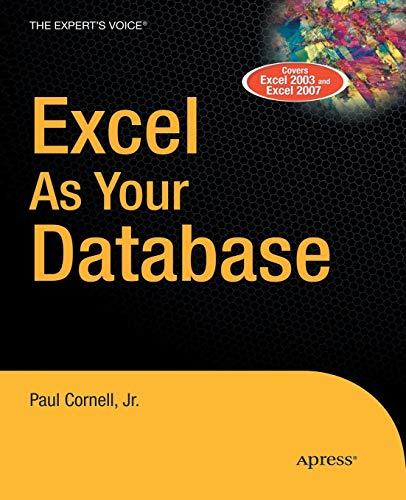Question
the picalc__example.s) template: .text #.align 2 .globl main main: la $t0, toss move $t1, $0 # init $t1 = 0 li $a0, 44 #43 =
the picalc__example.s) template:
.text #.align 2 .globl main main: la $t0, toss move $t1, $0 # init $t1 = 0
li $a0, 44 #43 = random float, 44 = random double jal srand L1: bge $t1, 4, exit # check loop condition lw $t2, 0($t0) # load # of tosses ############ begin your code ################################ # current code will just print out 3 random numbers generated L2: jal rand_range # use rand_range function to get random number # $f0 has the random number # j L2 ############ end your code ################################### mov.s $f12, $f0 # move result to print argument li $v0, 2 # 2 = print float, 3 = print double syscall # system call for print result addi $a0, $0, 0xA # ascii code for LF addi $v0, $0, 0xB # syscall 11 syscall addi $t1, $t1, 1 # increment $t1 add $t0, $t0, 4 # adjust index j L1 # iterate outer loop exit: li $v0, 10 # system call for exit syscall # we are out of here
# random float range rand_range: addi $sp, $sp, -12 sw $t0, 0($sp) sw $t1, 4($sp) sw $ra, 8($sp) jal rand # $v0 has random number mtc1 $v0, $f20 # move the int to $fp reg, mtc1.d for double cvt.s.w $f20, $f20 # convert int to float, cvt.d.w for double # la $t0, rmax # lw $t1, 0($t0) # mtc1 $t1, $f21 # cvt.s.w $f21, $f21 # f21 = rmax l.s $f21, rmaxf div.s $f22,$f20,$f21 # random = rand()/rmax l.s $f23, LB # f23 = lb l.s $f24, diff # f24 = diff mul.s $f25,$f22,$f24 # f25 = f22*f24 add.s $f0, $f23, $f25 lw $t0, 0($sp) lw $t1, 4($sp) lw $ra, 8($sp) addi $sp, $sp, 12 jr $ra
# For seeding the random number generator srand: addi $sp, $sp, -4 sw $t0, 0($sp) la $t0, rseed # Store the given seed sw $a0, 0($t0) lw $t0, 0($sp) addi $sp, $sp, 4 jr $ra # random number generator # seed = seed * 1103515245 +12345; rand: addi $sp, $sp, -20 sw $t0, 0($sp) sw $t1, 4($sp) sw $t2, 8($sp) sw $t5, 12($sp) sw $ra, 16($sp) la $t5,rseed # Get the current seed lw $t0,0($t5) li $t1,1103515245 # seed * 1103515245 mul $t2,$t0,$t1 add $v0,$t2,12345 # (seed * 1103515245) + 12345 li $t0,0x7FFFFFFF # ((seed * 1103515245) + 12345)&0x7FFFFFFF and $v0,$v0,$t0 sw $v0,0($t5) # Save the seed lw $t0, 0($sp) lw $t1, 4($sp) lw $t2, 8($sp) lw $t5, 12($sp) lw $ra, 16($sp) addi $sp, $sp, 20 jr $ra
.data .align 0 pi: .float 0.0 toss: .word 100, 1000, 10000 rseed: .word 1 rmax: .word 2147483647 rmaxf: .float 2147483647.0 LB: .float -1.0 UB: .float 1.0 diff: .float 2.0
the picalc__example.s) template:
.text #.align 2 .globl main main: la $t0, toss move $t1, $0 # init $t1 = 0
li $a0, 44 #43 = random float, 44 = random double jal srand L1: bge $t1, 4, exit # check loop condition lw $t2, 0($t0) # load # of tosses ############ begin your code ################################ # current code will just print out 3 random numbers generated L2: jal rand_range # use rand_range function to get random number # $f0 has the random number # j L2 ############ end your code ################################### mov.s $f12, $f0 # move result to print argument li $v0, 2 # 2 = print float, 3 = print double syscall # system call for print result addi $a0, $0, 0xA # ascii code for LF addi $v0, $0, 0xB # syscall 11 syscall addi $t1, $t1, 1 # increment $t1 add $t0, $t0, 4 # adjust index j L1 # iterate outer loop exit: li $v0, 10 # system call for exit syscall # we are out of here
# random float range rand_range: addi $sp, $sp, -12 sw $t0, 0($sp) sw $t1, 4($sp) sw $ra, 8($sp) jal rand # $v0 has random number mtc1 $v0, $f20 # move the int to $fp reg, mtc1.d for double cvt.s.w $f20, $f20 # convert int to float, cvt.d.w for double # la $t0, rmax # lw $t1, 0($t0) # mtc1 $t1, $f21 # cvt.s.w $f21, $f21 # f21 = rmax l.s $f21, rmaxf div.s $f22,$f20,$f21 # random = rand()/rmax l.s $f23, LB # f23 = lb l.s $f24, diff # f24 = diff mul.s $f25,$f22,$f24 # f25 = f22*f24 add.s $f0, $f23, $f25 lw $t0, 0($sp) lw $t1, 4($sp) lw $ra, 8($sp) addi $sp, $sp, 12 jr $ra
# For seeding the random number generator srand: addi $sp, $sp, -4 sw $t0, 0($sp) la $t0, rseed # Store the given seed sw $a0, 0($t0) lw $t0, 0($sp) addi $sp, $sp, 4 jr $ra # random number generator # seed = seed * 1103515245 +12345; rand: addi $sp, $sp, -20 sw $t0, 0($sp) sw $t1, 4($sp) sw $t2, 8($sp) sw $t5, 12($sp) sw $ra, 16($sp) la $t5,rseed # Get the current seed lw $t0,0($t5) li $t1,1103515245 # seed * 1103515245 mul $t2,$t0,$t1 add $v0,$t2,12345 # (seed * 1103515245) + 12345 li $t0,0x7FFFFFFF # ((seed * 1103515245) + 12345)&0x7FFFFFFF and $v0,$v0,$t0 sw $v0,0($t5) # Save the seed lw $t0, 0($sp) lw $t1, 4($sp) lw $t2, 8($sp) lw $t5, 12($sp) lw $ra, 16($sp) addi $sp, $sp, 20 jr $ra
.data .align 0 pi: .float 0.0 toss: .word 100, 1000, 10000 rseed: .word 1 rmax: .word 2147483647 rmaxf: .float 2147483647.0 LB: .float -1.0 UB: .float 1.0 diff: .float 2.0

Step by Step Solution
There are 3 Steps involved in it
Step: 1

Get Instant Access to Expert-Tailored Solutions
See step-by-step solutions with expert insights and AI powered tools for academic success
Step: 2

Step: 3

Ace Your Homework with AI
Get the answers you need in no time with our AI-driven, step-by-step assistance
Get Started


